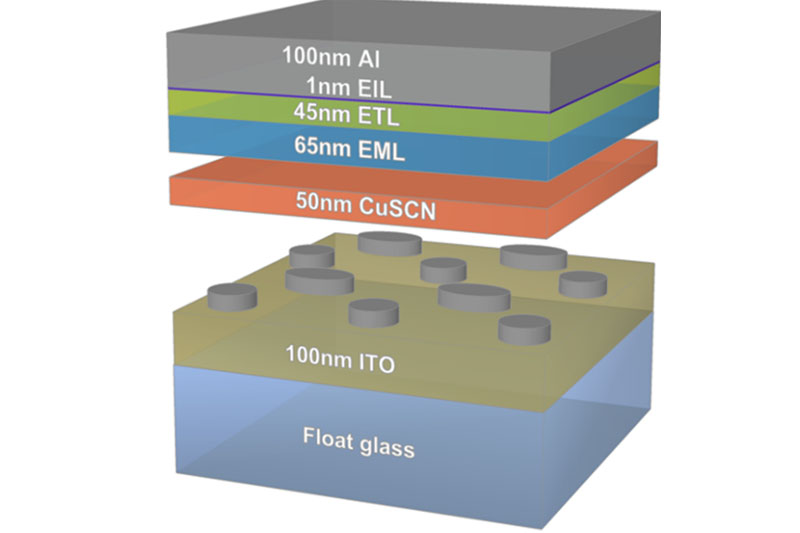Energy-efficient light-emitting diodes (LEDs) play a central role in our daily lives. Not only are they the illuminant of choice, they also enable many sensors, displays and screens to function properly. In our mobile phones, a special type is usually used, so-called "organic" LEDs (OLEDs), which are based on luminous molecules.
Further improving the specific properties of OLEDs was the central goal of a research cooperation between Joanneum Research Forschungsgesellschaft and the University of Graz in the FFG project PlasmoLED. For this purpose, it was investigated how both the generation of light in molecular layers and the emission of light can be controlled by aluminum nanoparticles. As a special challenge, the entire visible spectral range should be covered.
For this purpose, the Nanooptics Group at the University of Graz designed suitable particle shapes, which they then produced in a regular arrangement using nanolithographic methods. The project partner built the complex layer structure of the OLED on this. The optical analysis showed that the nanoparticles indeed led to a significant increase in light output. On the other hand, the color tone of the light could be adjusted via the nanoparticles. In particular, instead of a neutral white tone, a "warm" white tone corresponding to the light from incandescent bulbs was achieved. Together with the basically simple production, the control of the color properties of OLEDs by nanoparticles could enable new and more efficient light sources.
The work appeared in the September issue of Applied Physics A, was named Editor's Choice, and was chosen to illustrate the magazine's cover.
M. Auer-Berger, V. Tretnak, C. Sommer, F.-P. Wenzel, J. R. Krenn, E. J. W. List-Kratochvil, Multipitched plasmonic nanoparticle grating for broadband light enhancement in white light-emitting organic diodes, Appl. Physics A 128, 751 (2022), https://doi.org/10.1007/s00339-022-05854-w
